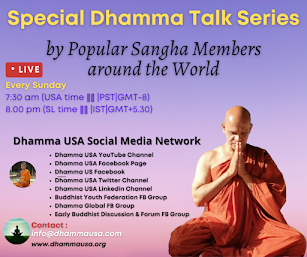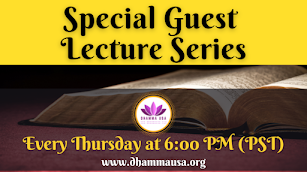Lumbinī: Cradle of Awakening
By Dr. Bhante Sumitta
Lumbinī, nestled in the Terai plains of present-day Nepal, holds a singular place in world heritage as the birthplace of Siddhattha Gotama—the prince who became the Buddha. Over more than two millennia, legend, pilgrimage, and archaeology have intertwined to reveal Lumbinī’s transformation from a sacred grove into a vibrant center of Buddhist devotion. This essay explores Lumbinī’s historical evolution: its early veneration, Ashoka’s patronage, medieval decline and rediscovery, modern archaeological revelations, and contemporary conservation efforts.
1. Birth and Early Veneration
According to tradition, Prince Siddhattha was born in 563 BC under a pair of flowering śāla trees in Lumbinī’s grove, on the border of the Sākya and Koliya republics. His mother, Queen Māyā, stood holding a tree branch when the Bodhisatta emerged, immediately walking seven steps and declaring his ultimate destiny as the Enlightened One.^1 This miraculous birth galvanized early Buddhist devotion across the Ganges basin, as communities recognized the egalitarian ethos inherent in his life and teachings.
2. Ashoka’s Pilgrimage and Patronage
The Mauryan emperor Asoka (ruled c. 268–232 BC) formalized Lumbinī’s sanctity when he visited in 245 BC. Inscribing a stone pillar in Brahmi script, he declared the village tax‑exempt and erected a stone railing and horse‑capital to mark the exact birthplace.^2 These monuments anchored continuous pilgrimage, as devotees from across South Asia flocked to honor the site where the Bodhisatta first took human form.
3. Medieval Memory and Rediscovery
Pilgrims such as the Chinese monks Fa-hsiên (c. 403 AD) and Xuanzang (c. 636 AD) recorded Lumbinī’s shrines and sacred pools—like the “Sākya Tank”—but by the 15th century the Terai’s malaria-infested marshes forced abandonment.^3 The site slipped into obscurity until 1896, when Governor Khadga Shamsher cleared Ashoka’s pillar, and P. C. Mukherji’s 1898–99 excavations uncovered the Mayādevī shrine plinth, birth-scene reliefs, and nearby stupas, reigniting scholarly and devotional interest.
4. Modern Archaeological Revelations
Post-independence teams built on these early finds. Debala Mitra (1961–62) and B. K. Rijal (1970–83) identified ten occupation layers, spanning from the 6th century BC through the medieval period.^4 These layers revealed multiple shrine phases, monastic compounds, votive stupas, and the brick-lined Shākya Tank. Later Japanese excavations documented five successive temple structures atop the nativity site, providing a chronological sequence of religious architecture.
Material culture unearthed at Lumbinī includes:
Terracotta and stone sculptures (e.g. Māyā’s birth relief, Bodhisattva figures, Dharmacakra panels)
Coins, beads, and Northern Black Polished Ware pottery
The relic‑casket lid from a votive stupa
These artifacts testify to Lumbinī’s continuous veneration from the Mauryan through Gupta eras and beyond.^5
5. Conservation and Master Planning
Recognizing Lumbinī’s universal value, UNESCO** and Nepal established the Lumbinī Development Trust (1975). Architect Kenzo Tange’s 1972 master plan envisioned a monastic zone, pilgrim facilities, and a museum, balancing archaeological integrity with living practice.^6 Today, Lumbinī’s tranquil park hosts monks, nuns, and lay devotees from around the globe, preserving its dual role as both an archaeological treasure and a vibrant center of Buddhist life.
Conclusion
From the śāla grove where Siddhattha’s first breaths were drawn to the carefully excavated shrine plinths and modern monastic enclaves, Lumbinī exemplifies the intertwining of history, legend, and living faith. Its layered past—renewed by continual rediscovery and dedicated conservation—ensures that the birthplace of the Buddha remains not just a relic of antiquity but a dynamic locus of reflection, practice, and pilgrimage.
References
1. Pandey, Ram Niwas. Lumbinī: The Birth‑Place of the Lord Buddha. UNESCO Silk Roads Paper, 1995.
2. Ibid.
3. Ibid.
4. Ibid.
5. Ibid.
6. Ibid.































0 comments:
Post a Comment
Your comments and feedback are very helpful to us in improving our posts. We really appreciate your time. Thank you!
Dhamma USA Team.